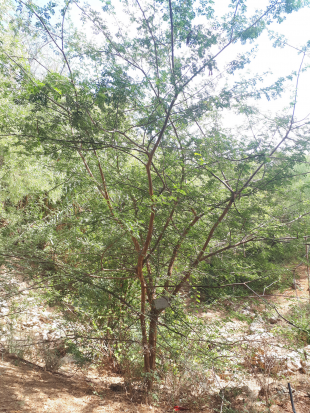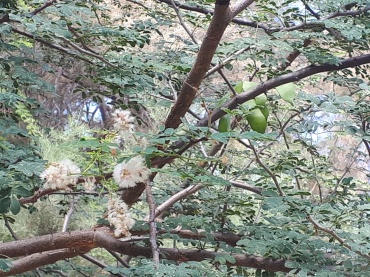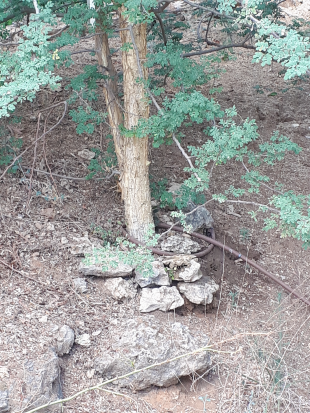Description and Uses
Acacia laeta (Black-hooked acacia) is a
tropical
tree from
East Africa . It is mainly grown for its
conservation crops
, which have a
medium shelf life. The crop is harvested by
total removing. It starts flowering after
3 -
5 years. The yield will be
?, but in its top season there will be a yield of
?. Other crop types include;
fuel, fodder, timber, gum resin, apiculture, . The
gum/resin is used as
minor food . The
bark is used as "
{missing data} " with
{missing data} (? -
?) as its significant
phytochemical. There is
Laeta oil extracted by
no extraction method from the
tree's
seed/nut yielding
? -
? oil. The
tree's wood is called
Laeta and has a density of
600 -
800 kg/m³. Regarding firewood production the
tree's growing speed is
medium, it's energetic value is
4900 ckal/kg and the wood's drying speed is
fast. After
35 years the
tree can be totally removed as it reached its commercial and ecological goal.
Acacia laeta has a lifespan of
50 years.
Environmental limitations
The tree is
9 meters tall with a crown of
5 meters wide. The
tree prefers a planting distance of
300 cm and a row distance of
300 cm. It is
fast growing and
partial shade tolerant.
Acacia laeta has a
deep root-system and it has symbiotic associations with the
Glomus intraradices fungi
(endo-mycorrhiza). It is
able to fix nitrogen moderately with
"Rhizobiaceae bacteria. The name(s) or string of bacteria include(s)
"Sinorhizobium teranga ". The
tree's flower-morphology is
hermaphroditic and is pollinated by
bees.
Acacia laeta is
deciduous in winter and
not allelopathic and has
thorns.
Acacia laeta thrives in an altitude of
1200 to
1650 meters above sea-level
(tropical). The minimum temperature is
-6°C; optimally between
21 -
40°C. The optimal rainfall is
625
mm/year. Without irrigation the annual rainfall should be between
250 -
750mm (L/m²). The optimal soil-pH is between
6.0 -
8.0 in a soil texture of
loam. To salt it is
a bit tolerant to wind
a bit tolerant and to fire
intolerant.
Pests and Diseases
Acacia laeta is susceptible to the following pests:
. And it's susceptible to the following diseases:
(missing data) ,
,
.
Seed Propagation
Seeds are
orthodox and can be stored for
40 months. There are approximative
9250
seeds/kg. The seeds can be propagated as followed:
- (1) Store harvested seeds dry at room temperature
- (2) Soak the seeds overnight in warm water before sowing.
- (3) press the seeds twice its size in the soil soil.






